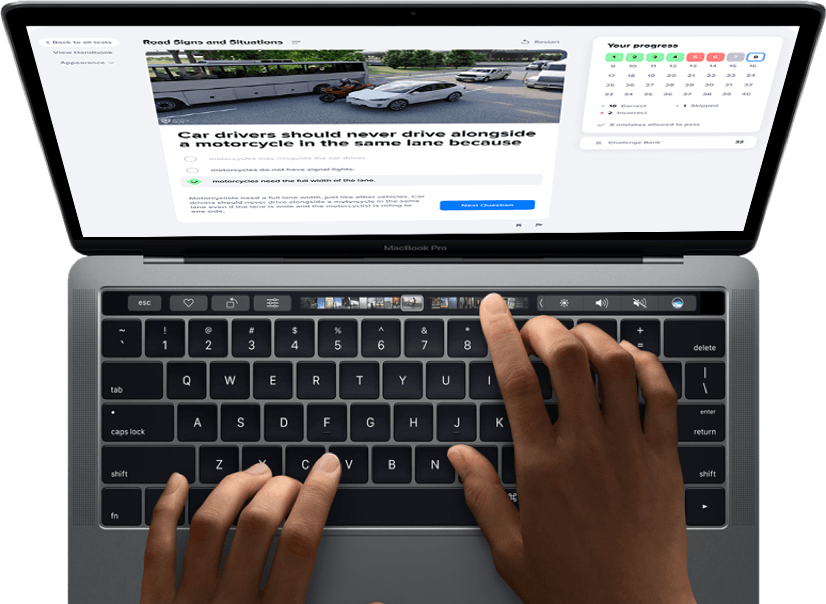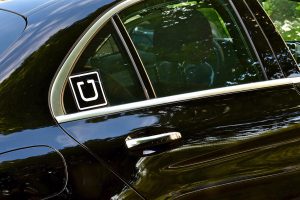
- Rate Your Rider
- Ride-Sharing Admissions
- Aux Cord Annoyance
- Compliments of the Driver
- Talk to the Hand, Not the Driver
- A Bad Trip

For the longest time, taxis provided horror stories for their drivers drunken nights, hookups, and downright rude passengers. But with the technological boom and ease brought by the tap of a button, ride-sharing services like Uber and Lyft have taken over. However, the horror stories have been from the passenger’s perspective. A comprehensive list of incidents and criminal behavior committed by Uber and Lyft drivers has been created to warn passengers about the people driving them around. But as headlines, and even a book, share the opposite perspective, we decided to put ourselves in the driver’s seat to find out what ride-sharing drivers think of their passengers.
What do drivers have to say? What behavior bothers them most, and what behaviors most lead to a low passenger rating? We surveyed over 400 current or former ride-sharing drivers to find out. Keep reading to see what we found.
Rate Your Rider
In a future world portrayed in a “Black Mirror” episode, each person is rated on a five-point scale with low ratings preventing people from access to normal needs like transportation and food. While nobody is walking around with a digital score above his or her head, this may not be too far from our current reality. At least when it comes to ride-sharing services.

Calling an Uber or Lyft and climbing into the back seat automatically subjects you to being rated, and a low score may prevent you from easily catching a ride in the future. Obvious actions like vomiting or smoking in the vehicle can quickly land you a pretty low score. Additionally, leaving trash, spilling food or drinks, engaging in sexual behavior, or failing to show for a scheduled ride could get you an average of two stars or less by your ride-sharing driver. It isn’t only offensive or disrespectful behavior that earns a low score, though. Both slamming the car door and back-seat driving earned an average of 2.5 stars, but drivers were more likely to take the latter into consideration when rating you.

Tipping in ride-sharing services has brought on some confusion. When introduced, Uber made it clear tipping wasn’t necessary. Their one-fare, all-in app payment method didn’t offer a way to tip, leaving passengers asking whether they should. Lyft, on the other hand, allowed passengers to leave a tip on their smartphones, leaving passengers to question how much was the “proper” amount. Whether a cash tip or given through an app, 85 percent of drivers agreed that not tipping was a factor in passengers’ ratings. Grabbing a ride without gratuity ended with an average of 2.6 stars for passengers. It may not be necessary for the service, but it is certainly necessary for a higher rating.
Ride-Sharing Admissions
Unlike Uber drivers, passengers can’t get banned from using the ride-sharing service simply due to a low rating, but drivers can decline rides and make the wait time for pickup much longer. Overall, 29 percent of drivers admitted to declining rides due to low passenger ratings.

While drivers divulged things about their passengers, they also admitted to participating in some questionable activity. Twenty-two percent of drivers confessed to passing gas while a passenger was in the vehicle, but even more surprising is that 19 percent of drivers have eaten food from a delivery order. Both of these offenses were carried out by more male drivers than female drivers, with men about 44 percent more likely to pass gas with a passenger in the car.

Breaking wind and stealing a french fry or two aren’t the best expressions of customer service, but drivers admitted to even more serious and controversial offenses. Four percent accepted drugs or alcohol from a passenger, and 6 percent hooked up with one. Male drivers were more likely to commit both acts, while only 2 percent of women admitted to each. Unfortunately, 13 percent of drivers experienced sexual harassment by a passenger an act that female drivers were 67 percent more likely to experience. The risk of sexual harassment or abuse by a passenger may play a role in why ride-sharing services are a male-dominated industry, with women making up only 14 percent of Uber drivers.
Aux Cord Annoyance


Nowadays, having control over the auxiliary cord gives you the same responsibilities as a professional DJ. Slacking on the job may not only anger the other passengers but also get your rights to the cord revoked. Apparently, it’s no different when it comes to music in a ride-sharing service. If you’re brave enough to ask for the aux cord, playing the right music and not annoying your driver is crucial. For almost 60 percent of drivers, this means straying from certain genres altogether.
Unless your driver makes his or her music preferences clear, playing country music is the most likely to annoy them. Rap and hip-hop aren’t too far behind, though, with 14 percent of drivers finding it annoying. Turns out the safest bet when creating a soundtrack for your ride is decade music. This only annoyed 2 percent of drivers.
Compliments of the Driver
Drivers rely on high ratings to get more rides and can often go to extreme lengths to get those stars. Providing chargers and complimentary drinks and snacks can make the ride more enjoyable, but which ride-sharing service provides more perks? Across all five complimentary services, Uber and Lyft remained pretty close.


Over 60 percent of drivers in both services offered options to charge passengers’ phones. They were also very likely to allow passengers to play music through their car’s audio system. About a third of drivers from both companies provided complimentary water or drinks, more so than courtesy snacks or mints. Eighteen percent of Lyft drivers even went the extra mile and provided their passengers with nausea bags.
Talk to the Hand, Not the Driver
Getting into a car with a stranger can be uncomfortable, especially when awkward silence is the only sound during the entire trip. It may seem like the friendly thing to do, but less than half of drivers found it desirable to make small talk with their passengers.


If you’re a Chatty Cathy, you may have better luck if you find yourself a female driver. Forty-five percent of female drivers didn’t mind talking to passengers, compared to 40 percent of male drivers finding it desirable. The amount of talking wanted also may depend on the ride type. Luxury or premium drivers enjoyed small talk the most, whereas drivers of carpool rides were the least likely to find it desirable.
A Bad Trip
So who are these horror story passengers? Over half of drivers’ worst experiences were rides involving male passengers exclusively. Only 21 percent of drivers’ worst experiences involved women exclusively. But the gender of the driver didn’t influence these results. Both female and male drivers reported the same distribution when asked about the gender of the passengers involved in their worst experiences.

Ride-Sharing Is Caring

Arranging a ride through a ride-sharing service has never been easier -- a few clicks on an app and a car is usually waiting for you. But the responsibilities of a passenger don’t stop once the car is ordered. Being respectful of both the vehicle and driver is important -- for a high passenger rating and because it’s just the right thing to do. Self-driving cars aren’t fully upon us yet, so put yourself in the driver’s seat and remember the golden rule: Treat your driver how you would want to be treated. You may even earn five gold stars.
Sources
- http://www.whosdrivingyou.org/rideshare-incidents
- https://nypost.com/2017/05/24/vile-passenger-attacks-lyft-driver-with-her-mucus/
- https://www.amazon.com/Confessions-Uber-Driver-John-Dillingham/dp/1549671324
- https://www.theatlantic.com/entertainment/archive/2016/10/black-mirror-nosedive-review-season-three-netflix/504668/
- https://www.nytimes.com/2016/05/22/travel/uber-taxi-tipping.html
- http://www.businessinsider.com/how-uber-drivers-get-deactivated-2017-7
- https://www.buzzfeed.com/carolineodonovan/the-fault-in-five-stars?bffbmain&ref=bffbmain&utm_term=.ucxNoQnvDV#.spBog81d0G
Methodology
We collected 498 respondents who had currently or previously driven for a ride-sharing service. About sixty-three percent of participants were men, 37 percent were women, and less than 1 percent identified as a gender not listed in our survey. Participants ranged in age from 18 to 63, with a mean of 31 and a standard deviation of 7.8. The average duration for which respondents had been employed by a ride-sharing service was eight months.
The data we are presenting rely on self-reporting. No statistical testing was performed, so the claims listed above are based on means alone. As such, this content is exploratory. The sample size of ride-sharing drivers was 498 people. It is possible that with more participants, we could have gained more insight into this population. The average threshold at which a driver declined a ride due to a passenger’s rating was limited to states with 15 or more respondents.
Fair Use Statement
To get a five-star rating for sharing this project’s images and content, make sure it’s for noncommercial purposes only and include a link back to this page to give the authors proper credit.





